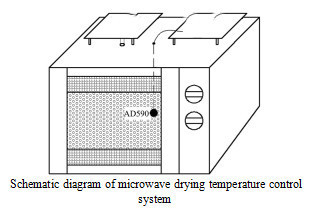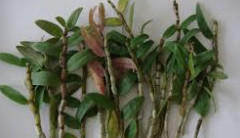Effects of Different Drying Technologies on the Quality of Dendrobium nobile Leaves
Objective: To study the effects of different drying processes on the quality of Dendrobium nobile leaves, and to provide theoretical basis for improving the initial processing and expanding the medicinal parts of Dendrobium nobile.
METHODS: Dendrobium nobile leaves were dried by hot air drying, microwave drying equipment, vacuum drying and vacuum freeze drying. The effects of four drying methods on color, microstructure, total polysaccharides and content of Dendrobium nobile leaves were investigated.

Result: The color of vacuum freeze-drying product was the best, which was superior to the other three drying methods. Different drying methods have different microstructures. The total polysaccharide content of Dendrobium nobile leaves after vacuum freeze drying, vacuum drying, hot air drying and microwave drying were 3.11%, 3.02%, 2.81% and 2.74%, respectively. Different drying processes have great influence on the content of total polysaccharides in Dendrobium nobile leaves, but little influence on the content of Dendrobium alkali.
CONCLUSION: Considering the cost, microwave drying of Dendrobium nobile leaves has better color, higher content of active ingredients, simple equipment, energy saving and large processing capacity, which is worthy of popularization and application in enterprise processing.

Dendrobium nobile is a valuable traditional Chinese medicine in China. It belongs to Dendrobium Orchidaceae. It is also known as Dendrobium oblate, Dendrobium nobile, Dendrobium oblate, Dendrobium oblate and so on. Its stem is one of the sources of traditional Chinese medicine Dendrobium. It is included in the Chinese Pharmacopoeia. The main active ingredients of Dendrobium nobile are alkaloids and polysaccharides, which have the functions of nourishing yin and clearing heat, benefiting stomach and nourishing body fluid, immune regulation, antioxidant, anti-cataract, anti-cancer, hypoglycemia and reducing blood lipid.
Dendrobium candidum stem is of high medicinal value, but its stem source is less and its price is expensive. It takes 2 to 4 years to harvest once. In the growth process of Dendrobium nobile, a large number of leaves are produced and harvested every year, but it has not been effectively utilized at present.
Existing studies have shown that many components in Dendrobium leaves are similar to those in the stems of Dendrobium. Sun Zhuoran et al. determined the polysaccharides content in different species and different medicinal parts of Dendrobium. Among them, polysaccharides are found in the roots, stems and leaves of Dendrobium nobile. Other studies have shown that Dendrobium leaves contain the same polysaccharides, flavonoids, alkaloids and liposoluble substances as stems.
In order to promote the full utilization of Dendrobium nobile resources, it is particularly necessary to conduct in-depth research on its leaves. However, fresh Dendrobium leaves have high moisture content, adequate nutrition, suitable for microbial growth and easy to cause decay. Therefore, it is very important to adopt appropriate drying technology to minimize the damage of its effective components and sensory effects in the drying process.
Qian Guimin et al. studied the effects of different drying methods on the content of Dendrobium alkali in fresh Dendrobium nobile. The results showed that different drying methods had almost no effect on the content of Dendrobium polysaccharide and Dendrobium alkali. Xinming et al. studied the effects of different drying methods on the content of Dendrobium polysaccharide and Dendrobium alkali. The results showed that different drying methods had great influence on the content of Dendrobium polysaccharide, while the content of Dendrobium alkali remained basically unchanged.
But up to now, there is no report about the effect of different drying methods on the active ingredients of Dendrobium nobile leaves during the post-harvest drying process. Based on this, the effects of different drying methods on these evaluation indexes were investigated in order to maximize labor and economic costs, and to provide scientific basis for improving the preliminary processing of Dendrobium nobile leaves and expanding the medicinal parts of Dendrobium nobile.